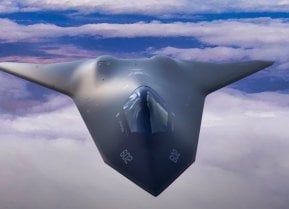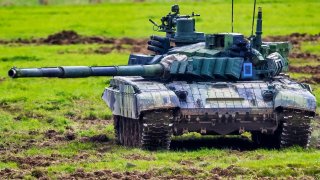Russia's T-72 Tank Is A Ukraine War Nightmare (1,200 Destroyed)
Russian tanks, particularly the T-72 model, have suffered significant losses in the Russo-Ukraine War. 1,200 T-72 tanks have been lost in the conflict. Some experts say far more.
Summary and Key Points: Russian tanks, particularly the T-72 model, have suffered significant losses in the Russo-Ukraine War.

-According to open-source intelligence group Oryx, Russia has lost 1,200 T-72 tanks in just one year. Initially, Russia had an estimated 6,900 T-72s, but recent estimates suggest only about 1,500 remain.
-The T-72, introduced in the 1970s, is outdated, and its high attrition rate may force Russia to rely on even older tank models.
-As Ukraine receives modern weaponry from Western allies, the aging T-72s are increasingly vulnerable on the battlefield, exacerbating Russia's equipment replenishment challenges.
Russia's T-72 Tank Losses Mount in Ukraine War: 1,200 Destroyed in a Year
High Attrition for T-72 Tank in Ukraine
Battlefield losses on both sides of the Russo-Ukraine War have been staggering. The fighting is the most vicious on the European continent since the Allies encircled Berlin, and casualty rates reflect the brutality. Both sides have hemorrhaged troops and equipment. The battlefield has become a graveyard of tanks and armored vehicles.

As equipment is destroyed, the two nations turn to different sources for replenishment. The Ukrainians have been fortunate enough to have Western backers willing to resupply Kyiv’s resistance with everything from F-16s to NLAWs to HIMARS. Russia has had to rely “on its stockpiles of Cold War and World War II-era relics,” according to Maya Carlin. Unfortunately for Russian President Vladimir Putin, Kyiv’s Western replenishments “have crucified Russian tanks” like the T-72.
Oryx’s figure – 1,200 T-72s lost – may well be an undercount. The intelligence firm uses verified footage and imagery to arrive at its numbers, meaning Oryx’s standards for verification likely leave destroyed tanks unaccounted for.
Either way, the Russians have a problem.
What is the T-72?
The T-72 is somewhat out of place on a modern battlefield, as this main battle tank was designed in the late 1960s. In production since 1968, 25,000 T-72s have been built.
The T-72 is an improvement on the T-62 model, built with both steel and composite ERA armor, a 125 mm smoothbore gun, and a V12 diesel engine. With a 320-gallon fuel capacity, the T-72 enjoys an operational range of 290 miles (or 430 miles with external fuel drums). The T-72 can achieve speeds of 47 miles per hour, but it only travels 2.5 mph in reverse.
Perhaps the most notable feature of the T-72 is its weight. At just 41 tons, the tank is small and compact relative to Western contemporaries, and this is not by accident. The Soviets designed their tanks to be small, then built their roads to match. The roads were thus big enough for Soviet tanks to use, but too tight for Western tanks. The original T-72 is underpowered, which might be part of why the tank has fared so poorly in Ukraine.
About the Author: Harrison Kass
Harrison Kass is a defense and national security writer with over 1,000 total pieces on issues involving global affairs. An attorney, pilot, guitarist, and minor pro hockey player, Harrison joined the US Air Force as a Pilot Trainee but was medically discharged. Harrison holds a BA from Lake Forest College, a JD from the University of Oregon, and an MA from New York University. Harrison listens to Dokken.
All images are Creative Commons or Shutterstock.


